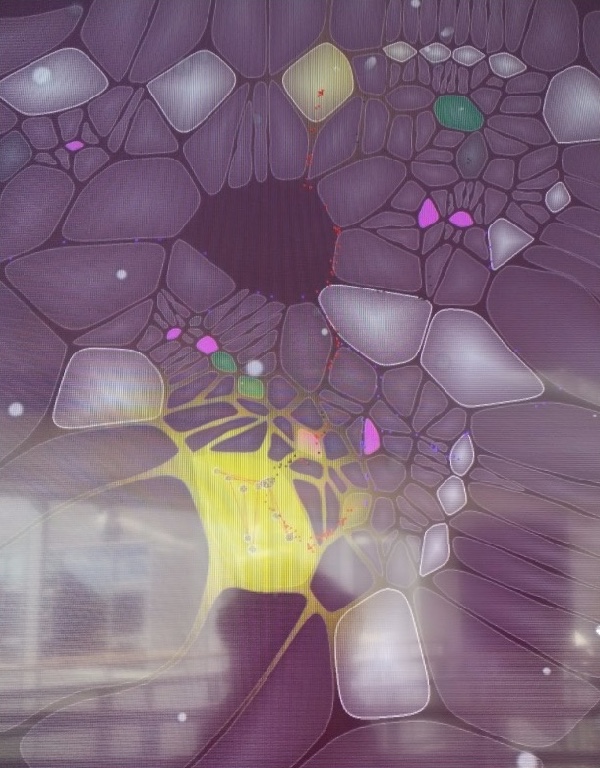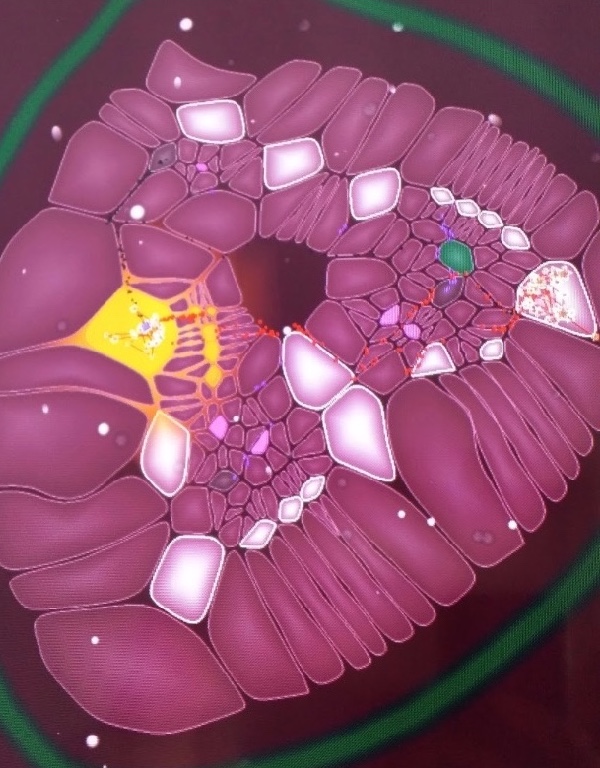Danish Agency for Culture
UCC Organism
UCC Organism is a data driven animation representing a school as a living organism.
UCC Organism is the software designed for ”A Body Has Many Members” - a public commission for the UCC (University College Capital) Campus Nordsjælland commissioned by the Danish Agency for Culture and the UCC. It consists of over 30 screens scattered across all parts of the campus that show a real time visualisation of the College’s institutional infrastructure. On these screens the invisible flows of economy, knowledge and power are made visible in a visual language akin to computer games, or scientific visualisations. Individual members of staff and students appear as avatars.
Client
- Danish Agency for Culture
2016 / Hillerød, Denmark
Software
UCC Organism is a data driven simulation running from the live schedule data from the UCC. The visualization is rendered using one of 30 ODroids and 1-3 Mac Minis distributed across the buildings. They communicate with a central server responsible for updating the schedule and issuing events like lunch breaks, holidays or train arrivals.
There are three main parts of the visualization: Architecture, Agents and the Energy.
Architecture
Living architecture visualized as an organic cell system. All floors of a 3 buildings in Campus Nordsjælland, were mapped from the architectural drawing. Each room has it cell that grows whenever students are inside during class and shrinks when empty. Corridor cell respond to the movement of student agents as they pass through the building. Additionally we have external bodies representing external forces like the government funding.
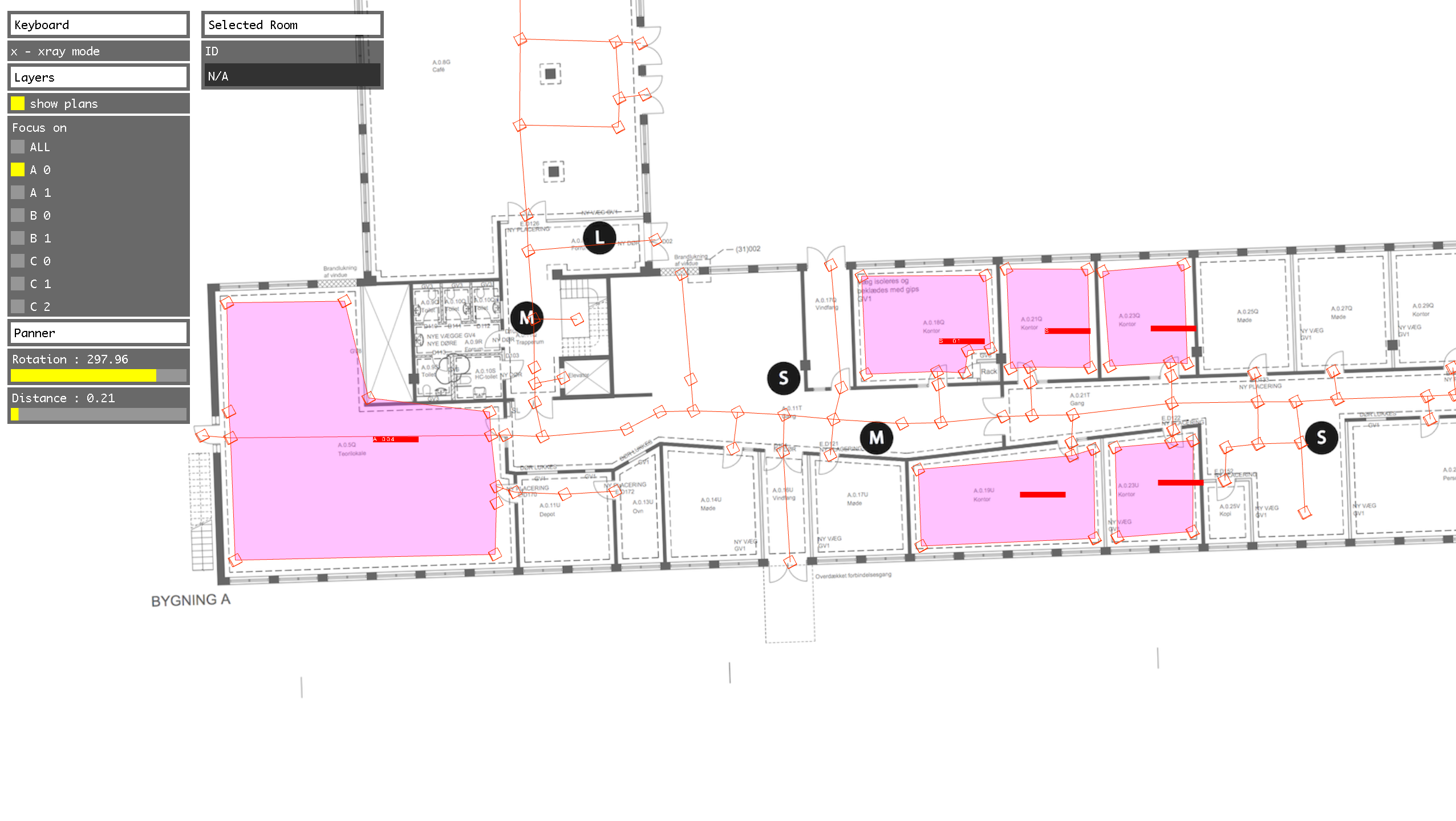
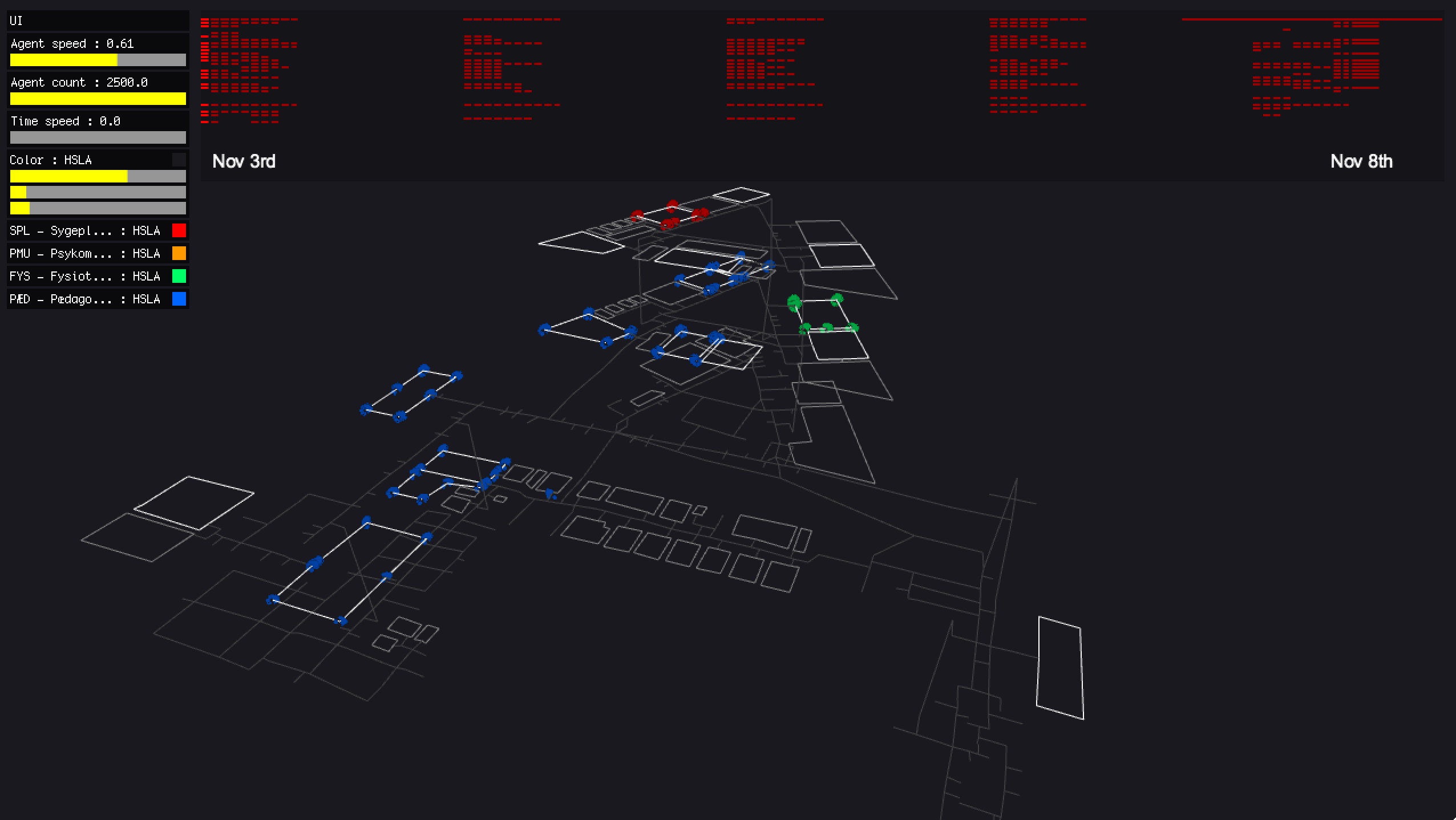
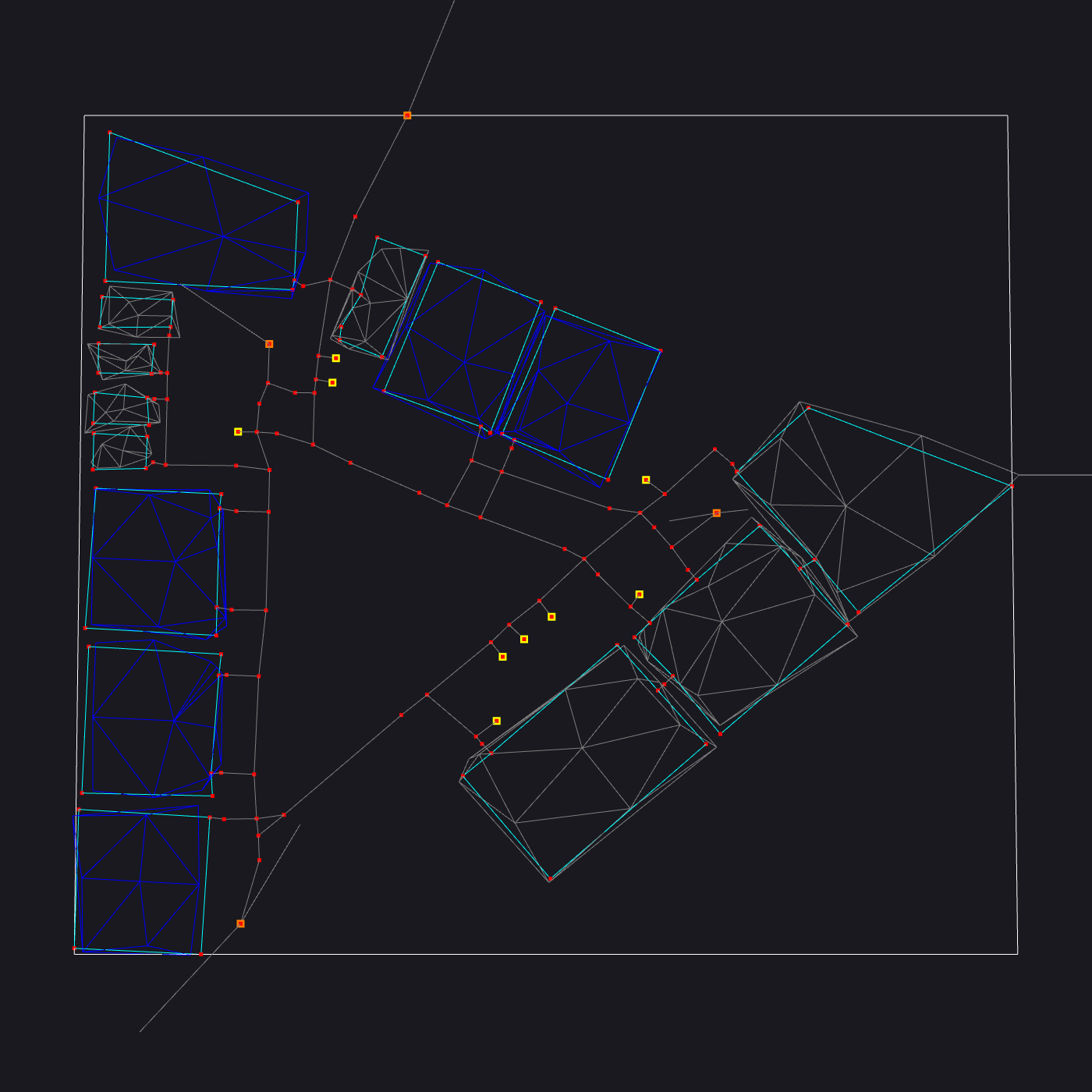
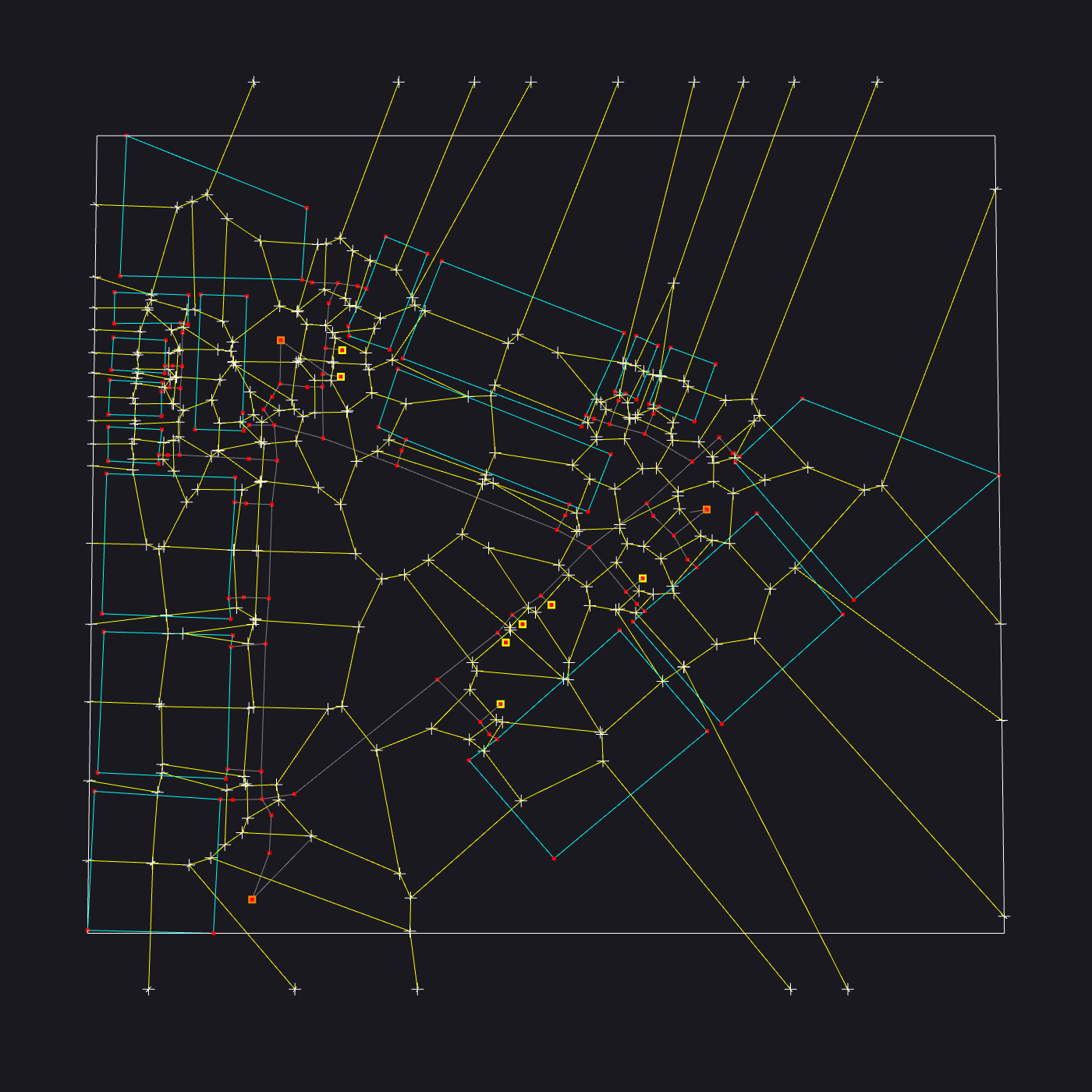
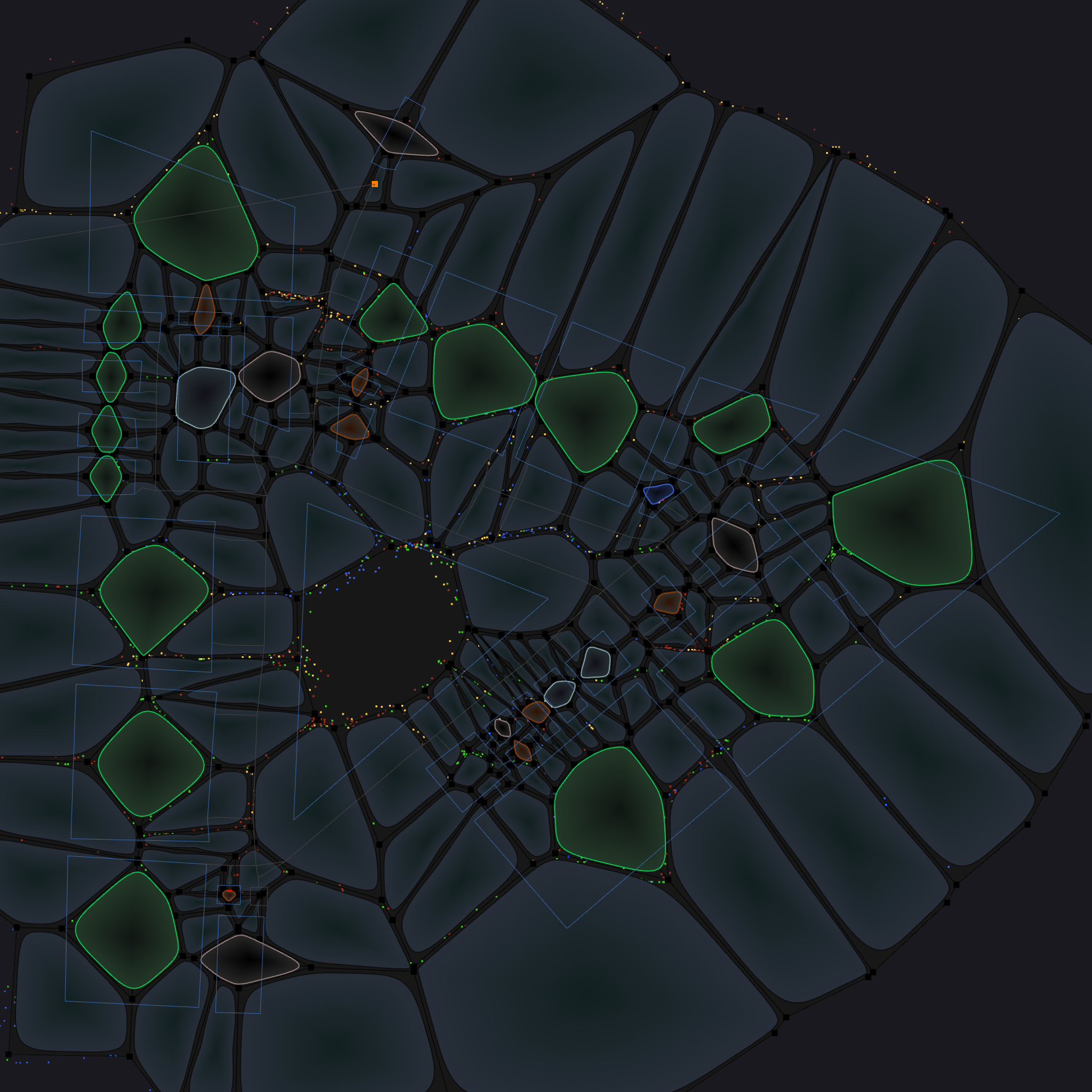
Agents
Goal driven agents. We have 11 distinct agent types for different student groups (e.g. pedagogy, physiology), teachers, janitors, cooks etc. Each agent has it's appearance driven by it's occupation, gender, age and number of years at UCC. Agents are autonomous (they can take any path in the school) but their goals (e.g. classroom to go) are data driven based on the schedule coming from UCC.
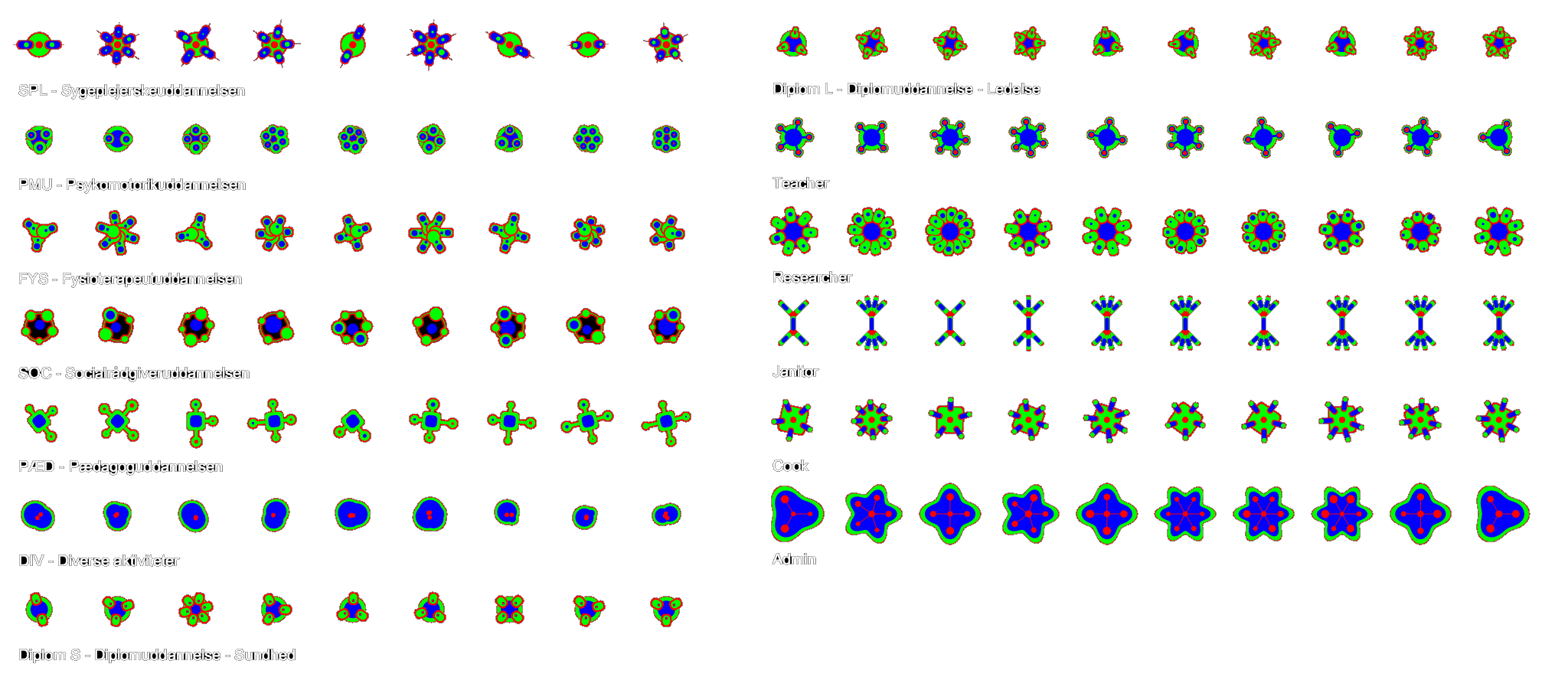
Energy
To represent interactions between agents themselves and agents and the environment we use a particle system. There are four energy types social (between agents), knowledge (produced at library and research labs), power (produced at the admin offices), dirt (flowing from the school outside as by product of the student activity).
Energy colors: social (red), knowledge (green), power (orange), dirt (brown).
Data
UCC Organism is driven by live data coming from the UCC systems: the lesson plan, classroom layout, bus schedules, holiday periods and lunch times are streamed lived to each of the screens.Student agents respond to that events by changing their target desination and behavior.
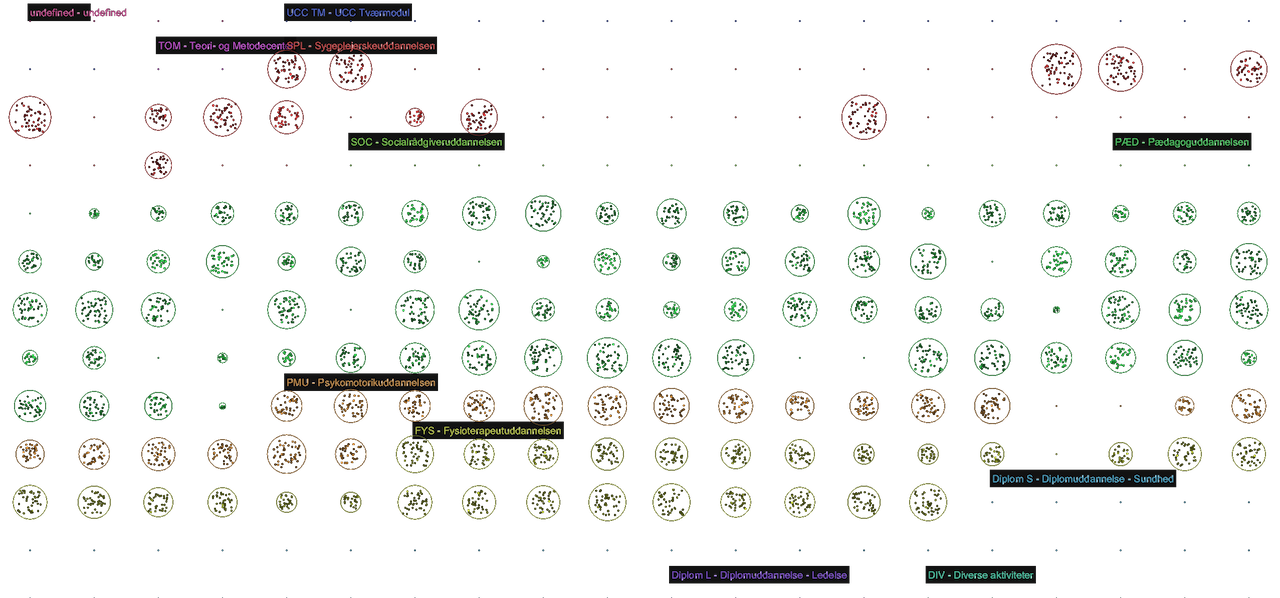

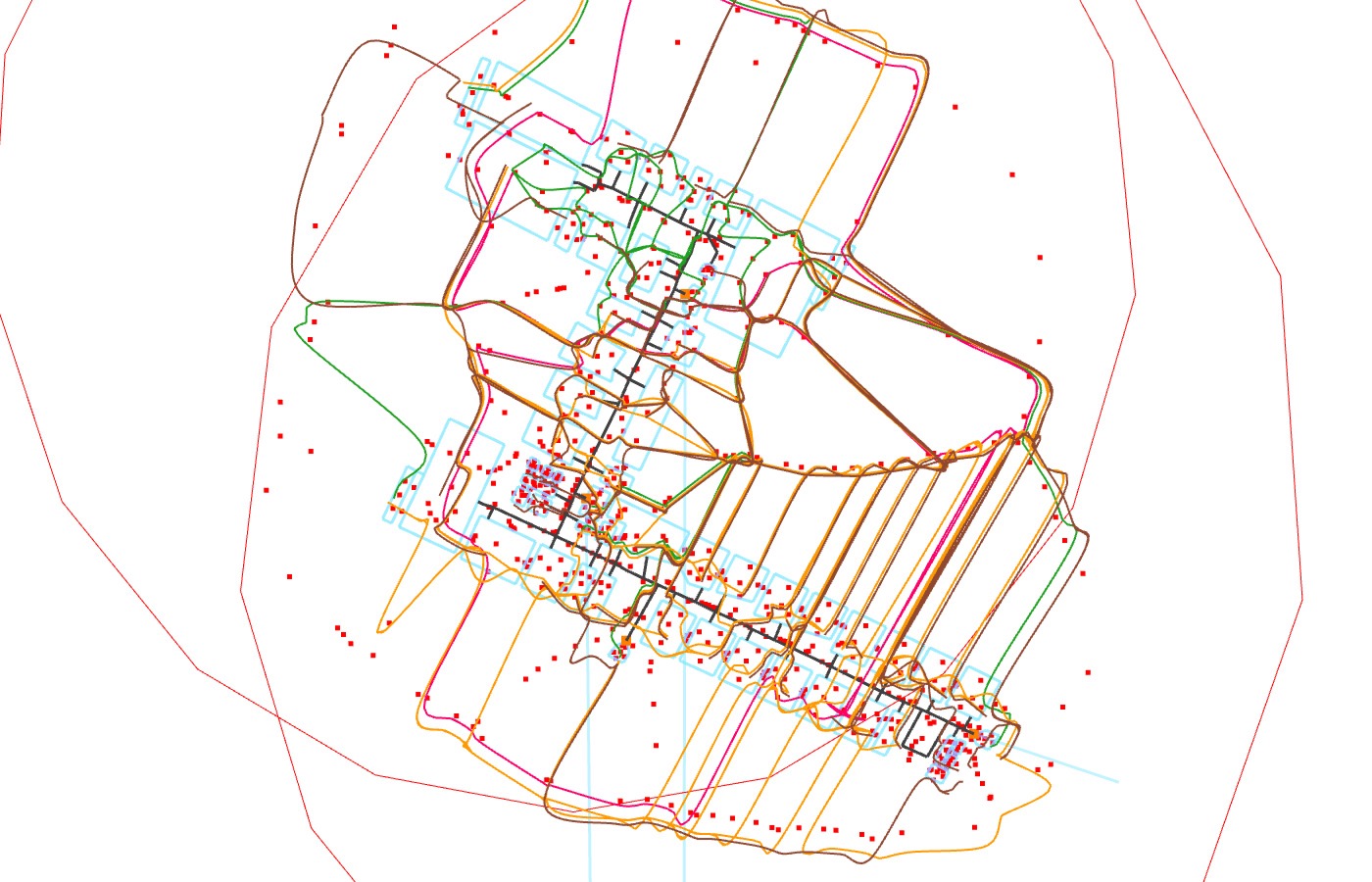
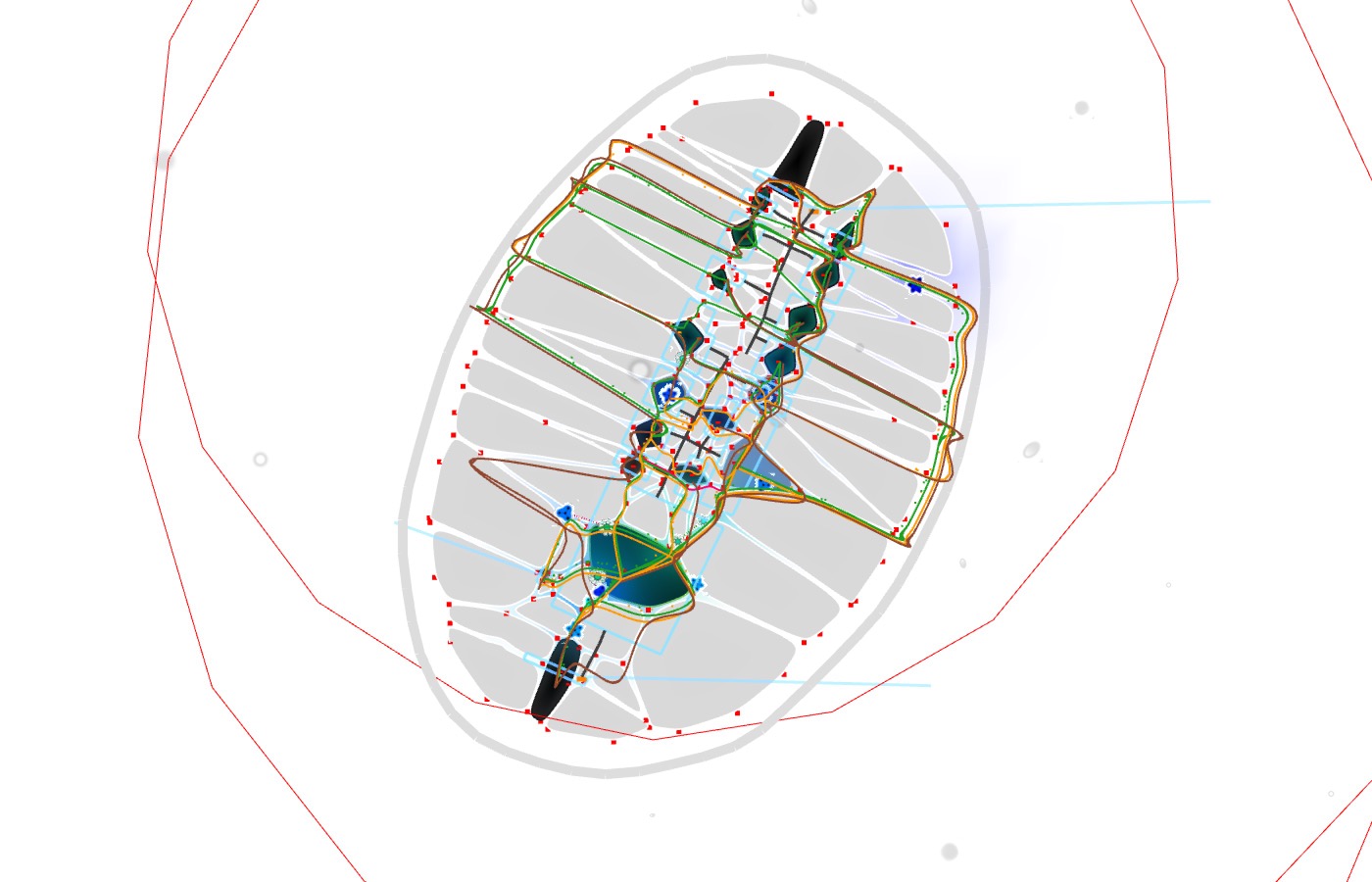
Permanent Installation
The artwork is installed permamently on Campus Nordsjælland in Denmark. 31 screens; each one showing different classroom of floor; are embedded intothe fabric of space constantly reminding the observers about the bigger structure they are part of. Colors of the visualization change during the day to add even more variety to the ever changing visuals.

